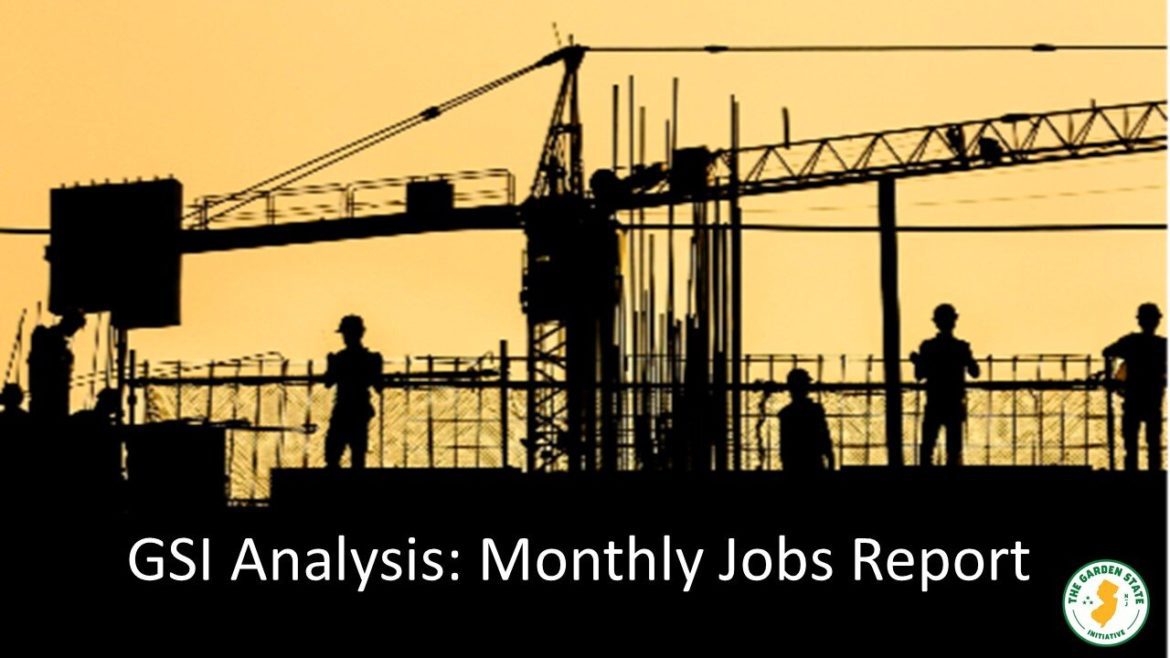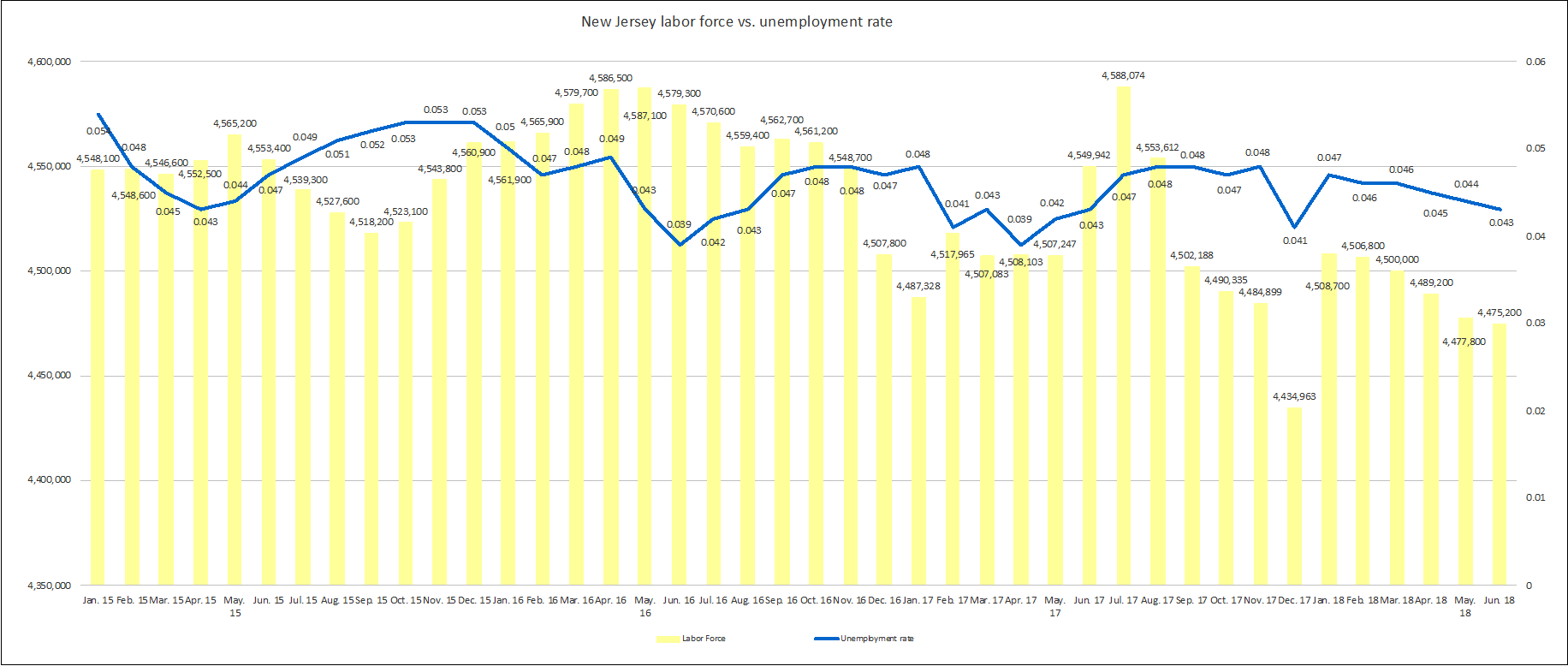Unemployment, TRANSFORMING OUR BUSINESS CLIMATE, Labor
GSI Analysis: June ’18 Jobs Report – Declining Unemployment Rate Hides Ever Shrinking Workforce

June showed fewer jobs in the Garden State and continued New Jersey’s trend of a shrinking labor force.
According to preliminary estimates released July 19 by the U.S. Bureau of Labor Statistics (BLS), New Jersey’s overall labor force dropped by 2,700 residents. This means that less New Jerseyans are either working currently or actively looking for work. The state’s shrinking labor force is an undeniably negative metric, especially when compared to the state’s labor force at the beginning of this year or going back three years to January 2015—both were larger than New Jersey’s current workforce.
While 1,100 more residents reported having employment in June, that small positive was offset by the number of residents who are actively looking for employment dropping by 3,800. The state’s overall labor force shrank because the number of residents who stopped looking for work (because of discouragement, retirement, relocation or any other reason) was greater than the number of residents who reported being employed.
New Jersey’s unemployment rate for June dropped slightly to 4.3 percent from 4.4 percent in May. However, this drop is hardly cause for celebration due to fact that it was caused mostly by the state’s shrinking labor force.
So far in 2018, New Jersey’s labor force has shrunk by 33,500 residents. Since January 2015, New Jersey’s labor force has shrunk by 72,900 residents. Over that same three year time period, the national labor force has grown by more than 5 million residents.
The workforce dropout in June marks the fifth month in a row that New Jersey’s workforce has shrunk. This ties the state’s longest streak of a shrinking workforce in the past three years. Before now, August thru December 2016 was the state’s longest streak of continual workforce dropout.
The chart below shows how New Jersey’s unemployment rate has dropped as the state’s labor force has shrank every month in 2018.
Each month, the BLS releases economic estimates for the state via two surveys. The household survey is how the state’s labor force and unemployment rate is determined. The U.S. Census Bureau conducts the household survey by contacting state residents to gather data about their employment status.
The other survey is the establishment survey which is completed by BLS who contacts approximately 4,000 business establishments in the state to gather their jobs data. This survey gives data on how many jobs were added in each industry and sector within the state.
According to the establishment survey from BLS, New Jersey lost 500 nonfarm payroll jobs in June. So far in 2018, New Jersey employers have added 17,300 jobs. Since January, 2015, New Jersey employers have added 542,200 jobs. The professional services sector was the biggest gainer of jobs in June with 1,600 new jobs. The Leisure and Hospitality sector lost the most jobs with 3,000 jobs lost in June. New Jersey’s Manufacturing sector had a gain of 600 jobs in June.
The state’s job losses in June as well as the continued shrinking labor force provide additional data to back up what many Garden State residents have already said—New Jersey’s economy is suffering.
A report put out by the nonpartisan Garden State Initiative in May this year shows how the state’s high business tax rates—especially in the manufacturing sector—has hurt New Jersey in relation to many of its neighboring and competing states. New Jersey has some of the highest taxes on businesses in the country and is one of only two states with double digit corporate income tax rates. The other state, Iowa, recently announced that they are lowering their tax rates across the board.
With New Jersey legislators and the governor hiking taxes and enacting additional new taxes when they passed a budget earlier this month, the state’s sluggish economy could become even worse.
New Jersey’s June economic reports show how many residents looking for work in the Garden State are continuing to struggle with the state’s slow moving economy. While there are some service industry sectors that have consistently added jobs, the state’s manufacturing and construction industries reflect how New Jersey’s uncompetitive policies have impacted the state’s overall economy.
A true view of the state’s economy goes far beyond the change in the monthly unemployment rate. State leaders passing increasingly uncompetitive economic policies, a continuously shrinking workforce and suffering blue collar job sectors show how New Jersey’s economy continues to suffer.
You can sign-up to receive the report via e-mail here.

